Encoder Only Transformer Models Quiz / Q&A

Are you intrigued by the revolutionary world of transformer architectures? Have you ever wondered how encoder-only transformer models like BERT, ELECTRA, or DeBERTa have reshaped the landscape of Natural Language Processing (NLP)? The rapid advancement of machine learning has led to the creation of numerous transformer architectures, each with unique features, applications, and underlying mechanics. Whether you’re a data scientist, machine learning engineer, generative AI enthusiast, or a student eager to deepen your understanding, this quiz offers an engaging and informative way to assess your knowledge and sharpen your skills. It would also help you prepare for your interviews on this topic. Encoder-only transformer models have become a cornerstone in …
Actionable Insights: Examples & Concepts
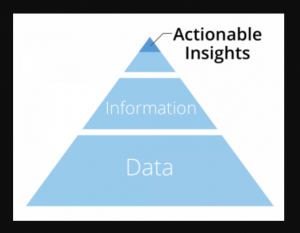
The idea of actionable insights is something that has gone mainstream across different departments in any and every business due to the onset of decision-centric analytics and digital transformation initiatives at large. Today, actionable insights are at the heart of many successful business decisions, and are used to help companies grow further than ever before. Actionable insights are key to any data analytics initiatives including decision-centric analytics which are at the heart of digital transformation. Analytics centered around actionable insights can also be termed as actionable analytics. In this blog post, we will understand the concepts of actionable insights with the help of examples along with few actionable analytics tools …
Hypothesis Testing Steps & Examples
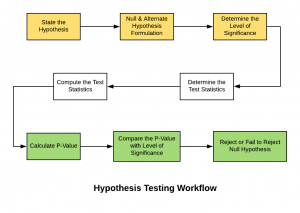
Hypothesis testing is a technique that helps scientists, researchers, or for that matter, anyone test the validity of their claims or hypotheses about real-world or real-life events in order to establish new knowledge. Hypothesis testing techniques are often used in statistics and data science to analyze whether the claims about the occurrence of the events are true, whether the results returned by performance metrics of machine learning models are representative of the models or they happened by chance. This blog post will cover some of the key statistical concepts including steps and examples in relation to what is hypothesis testing, how to formulate them and how to use them in …
OpenAI GPT-3 Models List: Explained with Examples
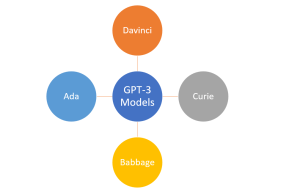
In the ever-evolving landscape of natural language processing (NLP), OpenAI’s GPT-3 models have garnered significant attention for how they could understand and generate human-like text. Different GPT-3 models discussed in this blog can be accessed using APIs and OpenAI Playground. In this blog post, we will delve into the OpenAI GPT-3 models and provide a comprehensive list, along with explanations and examples of their capabilities. Although GPT-3.5 models are more powerful than their counterpart GPT-3 models, it is only these GPT-3 models which are currently available for fine-tuning. Whether you are an experienced data scientist or a curious generative ai enthusiast, understanding these models is crucial in making the most …
LLM Chain OpenAI Python Example
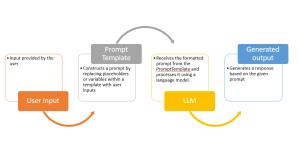
Have you ever wondered how to fully utilize large language models (LLMs) in our natural language processing (NLP) applications, like we do with ChatGPT? Would you not want to create an application such as ChatGPT where you write some prompt and it gives you back output such as text generation or summarization. While learning to make a direct API call to an OpenAI LLMs is a great start, we can build full fledged applications serving our end user needs. And, building prompts that adapt to user input dynamically is one of the most important aspect of an LLM app. That’s where LangChain, a powerful framework, comes in. In this blog, …
Langchain ChatGPT Hello World Python Example
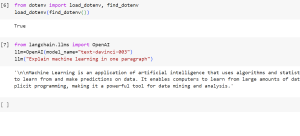
Have you ever wondered how to build applications that not only utilize large language models (LLMs) but are also capable of interacting with their environment and connecting to other data sources. If so, then LangChain is the answer! In this blog, we will learn about what is LangChain, what are its key aspects, how does it work. We will also quickly review the concepts of prompt, tokens and temperature when using the OpenAI API. We will the learn about creating a ‘Hello World’ Python program using LangChain and OpenAI’s Large Language Models (LLMs) such as GPT-3 models. What is LangChain Framework? LangChain is a dynamic framework specifically designed for the …
Huggingface Arxiv Dataset: Python Example

Working with large and specific datasets is a common requirement in the field of natural language processing (NLP) and machine learning. The Arxiv dataset, containing metadata such as titles, abstracts, years, and categories of research papers, is an invaluable resource for researchers and data scientists. How can we easily load this dataset and extract the required information? In this blog post, we will explore a Python example using the Hugging Face library to load the Arxiv dataset and extract specific metadata. Python Code for Loading Huggingface Arxiv Dataset The following are the steps to load Hugging face Arxiv dataset using python code: Real-World Application Use Cases: Analyzing Research Papers Imagine …
Encoder-only Transformer Models: Examples
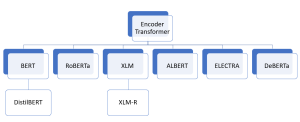
How can machines accurately classify text into categories? What enables them to recognize specific entities like names, locations, or dates within a sea of words? How is it possible for a computer to comprehend and respond to complex human questions? These remarkable capabilities are now a reality, thanks to encoder-only transformer architectures like BERT. From text classification and Named Entity Recognition (NER) to question answering and more, these models have revolutionized the way we interact with and process language. In the realm of AI and machine learning, encoder-only transformer models like BERT, DistilBERT, RoBERTa, and others have emerged as game-changing innovations. These models not only facilitate a deeper understanding of …
LLMs & Semantic Search Course by Andrew NG, Cohere & Partners
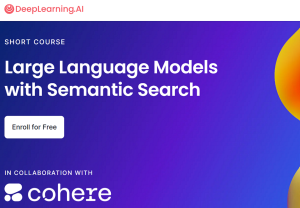
Andrew Ng, a renowned name in the world of deep learning and AI, has joined forces with Cohere, a pioneer in natural language processing technologies. Alongside him are Jay Alammar, a well-known educator and visualizer of machine learning concepts, and Serrano Academy, an esteemed institution dedicated to AI research and education. Together, they have launched an insightful course titled “Large Language Models with Semantic Search.” This collaboration represents a fusion of expertise aimed at addressing the growing needs of semantic search in various applications. In an era where keyword search has dominated the search landscape, the need for more sophisticated, content-aware search capabilities is becoming increasingly evident. Content-rich platforms like …
Quiz: BERT & GPT Transformer Models Q&A

Are you fascinated by the world of natural language processing and the cutting-edge generative AI models that have revolutionized the way machines understand human language? Two such large language models (LLMs), BERT and GPT, stand as pillars in the field, each with unique architectures and capabilities. But how well do you know these models? In this quiz blog, we will challenge your knowledge and understanding of these two groundbreaking technologies. Before you dive into the quiz, let’s explore an overview of BERT and GPT. BERT (Bidirectional Encoder Representations from Transformers) BERT is known for its bidirectional processing of text, allowing it to capture context from both sides of a word …
7 Free MIT AI / Machine Learning Courses: Enroll Now!

Are you eager to dive into the world of machine learning and AI but worried about the costs? Are you fascinated by how data analytics can shape the future of various industries? What if you could access top-notch education from one of the leading institutions in the world, absolutely free? In the next six months, MIT is offering seven upcoming free courses designed to equip you with the knowledge and skills in machine learning, AI, and data analytics. Whether you’re a seasoned professional looking to upskill or a beginner ready to embark on a new journey, these courses provide an incredible opportunity. In this blog, we’ll delve into the details …
Pre-training vs Fine-tuning in LLM: Examples
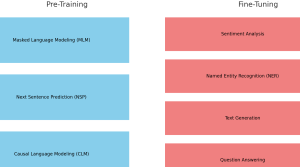
Are you intrigued by the inner workings of large language models (LLMs) like BERT and GPT series models? Ever wondered how these models manage to understand human language with such precision? What are the critical stages that transform them from simple neural networks into powerful tools capable of text prediction, sentiment analysis, and more? The answer lies in two vital phases: pre-training and fine-tuning. These stages not only make language models adaptable to various tasks but also bring them closer to understanding language the way humans do. In this blog, we’ll dive into the fascinating journey of pre-training and fine-tuning in LLMs, complete with real-world examples. Whether you are a …
IIT Madras Fellowship in AI for Social Good
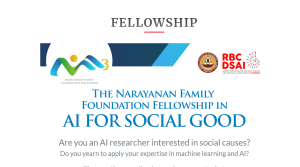
Are you an AI researcher driven by the passion to make a positive impact on society? Do you seek to use your knowledge in machine learning and AI to contribute to real-world issues? Are you intrigued by the idea of joining a leading interdisciplinary research center for data science in India? Then here is the opportunity to discover a unique opportunity that aligns with your aspirations and expertise at the Robert Bosch Centre for Data Science and Artificial Intelligence (RBCDSAI), IIT Madras. Apply Now for fellowship program in AI for social good. About RBCDSAI RBCDSAI is one of India’s pre-eminent interdisciplinary research academic centers specializing in Data Science and AI. …
Top 5 Books on Generative AI: New Releases on Amazon

Are you fascinated by the potential of generative artificial intelligence (AI)? Are you looking for the latest insights and knowledge in the field of AI and its creative applications? Look no further! In this blog post, we’ll introduce you to the top 5 books on generative AI that have been making waves on Amazon in the last 90 days. These books delve into various aspects of generative AI, offering readers a comprehensive understanding of its implications, applications, and transformative power. 1. The Artificial Intelligence and Generative AI Bible: [5 in 1] The Most Updated and Complete Guide Author: Alger Fraley Rating: 4.4 Step into the world of generative AI with …
Machine Learning Projects for Final Year Students: Examples
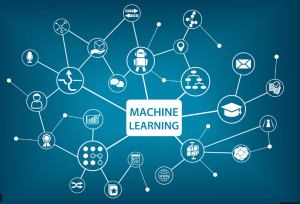
As aspiring data scientists, computer scientists, and statisticians, the final year of your academic journey presents a perfect opportunity to showcase your skills and knowledge in practical applications. In this blog, we will explore a diverse set of exciting machine-learning projects that are well-suited for final-year students. These projects cover various domains, including education, healthcare, crime prediction, and more. We will delve into each project’s description, problem type (classification, regression, etc.), and the methods used for analysis. Whether you are seeking inspiration for your final year project or simply eager to explore the power of machine learning in real-world scenarios, this blog has something for everyone! In case you would …
Huggingface Transformers Hello World: Python Example
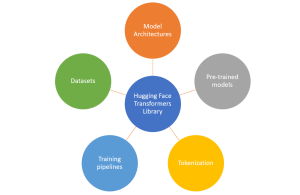
Pre-trained models have revolutionized the field of natural language processing (NLP), enabling the development of advanced language understanding and generation systems. Hugging Face, a prominent organization in the NLP community, provides the “transformers” library—a powerful toolkit for working with pre-trained models. In this blog post, we’ll explore a “Hello World” example using Hugging Face’s Python library, uncovering the capabilities of pre-trained models in NLP tasks. With Hugging Face’s transformers library, we can leverage the state-of-the-art machine learning models, tokenization tools, and training pipelines for different NLP use cases. We’ll discuss the importance of pre-trained models in NLP, provide an overview of Hugging Face’s offerings, and guide you through an example …
I found it very helpful. However the differences are not too understandable for me